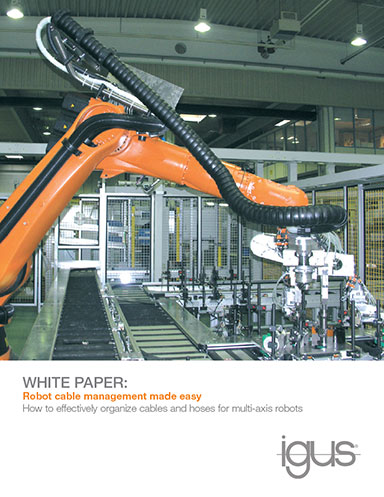In the field of multi-axis robots, industrial integrators are faced with the unique challenge of selecting and managing cables to be run on the outside of a moving six-axis platform. The complex movements made by six-axis robots require special consideration when deciding on how to manage their cable systems.
Traditional cable management systems attempt to keep cables static, while operations surrounding them are dynamic. Restricting the movement of the cables can create points of stress, accelerating cable failure. Today, new intricate movements carried out by robots, especially the sixth-axis rotation, have created a need for a more modern way of thinking about cable selection and management.
While current systems utilize a more restrictive cable package that will run cables from the robot case to the end effector, igus® engineers are urging designers to consider a new, dynamic approach: treat a six-axis robot as three separate segments: the sixth to third axis, the third to second axis, and the second to first axis.
Article topics
Email Sign Up











